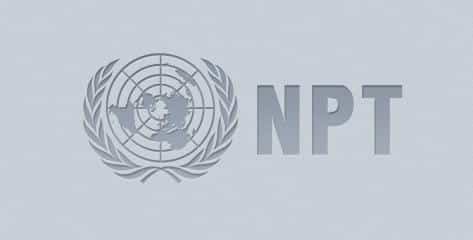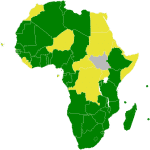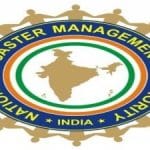What is NPT?
The Nuclear Non-Proliferation treaty (NPT) which seeks to inhibit the spread of nuclear weapons, entered into force in March, 1970. It was proposed for adoption in the year 1968, with a condition that it will come into effect only when the erstwhile Soviet Union, UK, US and 40 other states ratify it.
The three Pillars of NPT
- It seeks to inhibit the spread of nuclear weapons and technology.
- It seeks to promote cooperation in the peaceful uses of nuclear energy.
- It seeks to further the goal of disarmament.
Member states and their classification
At present, 190 countries (a near-universal membership) are party to the NPT. North Korea ratified the NPT in 1985 but never complied with its principles and eventually withdrew from the treaty in 2003. The states are classified into Nuclear Weapons States (NWS) and Non- Nuclear Weapons States (NNWS). The treaty recognizes only US, UK, Russia, China and France as NWS.
The guiding principles
The NNWS agree to never acquire nuclear weapons and the NWS agree to share the benefits of peaceful nuclear technology with the NNWS.
The NWS also agree to pursue nuclear disarmament aimed at the ultimate elimination of their nuclear arsenals.
To verify these commitments and to ensure that nuclear materials are not being diverted for destructive purposes, the International Atomic Energy Agency( IAEA) has been tasked to inspect the nuclear facilities of the NNWS.
The treaty also recognizes the inalienable right of the NNWS to research, develop and use nuclear energy for non-weapon purposes.
It also supports the exchange of such peaceful nuclear related information and technology between NWS and NNWS.
Why India is not a member?
South Sudan, India, Pakistan and Israel are the only countries that have not signed the treaty. They can accede to the treaty only as NNWS because the status of NWS is reserved for only those countries that manufactured and exploded a nuclear weapon or a device before 1st January, 1967. For them, joining the treaty would mean that they will have to dismantle their nuclear weapons and place their nuclear materials under international safeguards.
India says that NPT is an entirely unfair treaty as the nuclear weapons states have no obligation to give up their weapons while the non nuclear weapon states are not allowed to have them.
India is committed to nuclear non proliferation, but does not want to endorse such a biased treaty.
The NPT stands on three pillars of non-proliferation, disarmament and peaceful use of nuclear energy. Although it calls for nuclear disarmament, no fixed timelines have been mentioned.
China has allegedly violated the treaty by proliferating knowledge to Pakistan.
India feels that it’s security is at risk until these five NWS completely dismantle their nuclear arsenal.
Also Read: Demographic Dividend
परमाणु अप्रसार संधि (एनपीटी) और भारत
एनपीटी क्या है?
- परमाणु अप्रसार संधि (एनपीटी) परमाणु हथियारों के प्रसार को बाधित करने का प्रयास है, जिसे मार्च 1970 में सेना में प्रवेश मिला था।यह वर्ष 1968 में स्वीकार के लिए एक शर्त के साथ प्रस्तावित किया गया था कि यह केवल तब प्रभाव में आयेगा जब तत्कालीन सोवियत संघ, ब्रिटेन, अमेरिका और 40 अन्य राज्यों में इसकी पुष्टि हो।
परमाणु अप्रसार संधि के तीन स्तंभ
1-यह परमाणु हथियार और प्रौद्योगिकी के प्रसार को बाधित करने का प्रयास है।
2-यह परमाणु ऊर्जा के शांतिपूर्ण उपयोग में सहयोग को बढ़ावा देने के लिए है।
3-यह निरस्त्रीकरण के लक्ष्य को आगे बढ़ाना चाहता है।
सदस्य राज्य और उनके वर्गीकरण
वर्तमान में, 190 देशों (सार्वभौमिक सदस्यता) एनपीटी की पक्ष में हैं।उत्तर कोरिया ने 1985 में परमाणु अप्रसार संधि का अनुमोदन किया है लेकिन कभी भी सिद्धांतों का पालन नही किया और अंत में 2003 में संधि से निकल गया।
राज्यों को परमाणु हथियार राष्ट्र (NWS) और गैर परमाणु हथियार राज्यों (NNWS) में वर्गीकृत किया जाता है।संधि NWS के रूप में केवल अमेरिका, ब्रिटेन, रूस, चीन और फ्रांस को पहचानता है।
मार्गदर्शक सिद्धांत
NNWS परमाणु हथियार हासिल नहीं करने के लिए सहमत हैं और NWS राष्ट्र NNWS के साथ शांतिपूर्ण परमाणु प्रौद्योगिकी का लाभ साझा करने के लिए सहमत हैं।
NWS भी अपने परमाणु हथियारों का अंतिम उन्मूलन के उद्देश्य से परमाणु निरस्त्रीकरण को आगे बढ़ाने के लिए सहमत है।
इन प्रतिबद्धताओं को सत्यापित करने और यह सुनिश्चित करना है कि परमाणु सामग्री को विनाशकारी उद्देश्यों के लिए नहीं लिया जा रहा है तथा NNWS की परमाणु सुविधाओं का निरीक्षण करने के लिए अंतरराष्ट्रीय परमाणु ऊर्जा एजेंसी (आईएईए) को यह जिम्मा सौंपा गया है।
यह संधि परमाणु ऊर्जा के अनुसंधान, विकास और गैर हथियार प्रयोजनों के लिए भी NNWS की अविच्छेद्य अधिकार को मान्यता देती है।
यह NWS और NNWS के बीच शांतिपूर्ण परमाणु संबंधित सूचना और प्रौद्योगिकी के आदान-प्रदान का भी समर्थन करता है।
भारत एक सदस्य क्यों नहीं है?
दक्षिण सूडान, भारत, पाकिस्तान और इसराइल केवल ऐसे देश है जिन्होंने इस संधि पर हस्ताक्षर नहीं किया है। वे केवल NNWS के रूप में संधि को स्वीकार कर सकते हैं क्योंकि NWS की स्थिति केवल उन देशों लिए आरक्षित है जिन्होंने 1 जनवरी1967 से पहले परमाणु हथियार या एक डिवाइस निर्मित तथा विस्फोट कर लिए हो।उनके लिए, संधि में शामिल होने का मतलब यह होता है कि उन्हें अपने परमाणु हथियारों को नष्ट करना होगा और अंतरराष्ट्रीय सुरक्षा उपायों के तहत अपने परमाणु सामग्रीयो को रखना होगा।
भारत का कहना है कि परमाणु अप्रसार संधि एक पूरी तरह से अनुचित संधि है,परमाणु हथियार राज्यों का अपने हथियारों को छोड़ने के रूप में कोई दायित्व नहीं है जबकि गैर परमाणु हथियार राज्यों को उन्हें रखने की अनुमति नहीं है ।
भारत परमाणु अप्रसार के लिए प्रतिबद्ध है लेकिन इस तरह के एक पक्षपाती संधि का समर्थन नहीं करना चाहता है।एनपीटी परमाणु अप्रसार, निरस्त्रीकरण और परमाणु ऊर्जा के शांतिपूर्ण उपयोग के तीन स्तंभों पर खड़ा है।हालांकि यह परमाणु निरस्त्रीकरण के लिए कोई निश्चित समयसीमा का उल्लेख नही किया गया है।
चीन ने कथित तौर पर पाकिस्तान को ज्ञान प्रसार द्वारा संधि का उल्लंघन किया है।
भारत का मानना है कि इसकी सुरक्षा तब तक खतरे में है जब तक की इन पांच NWS पूरी तरह से अपने परमाणु शस्त्रागार को नष्ट न कर दे।











